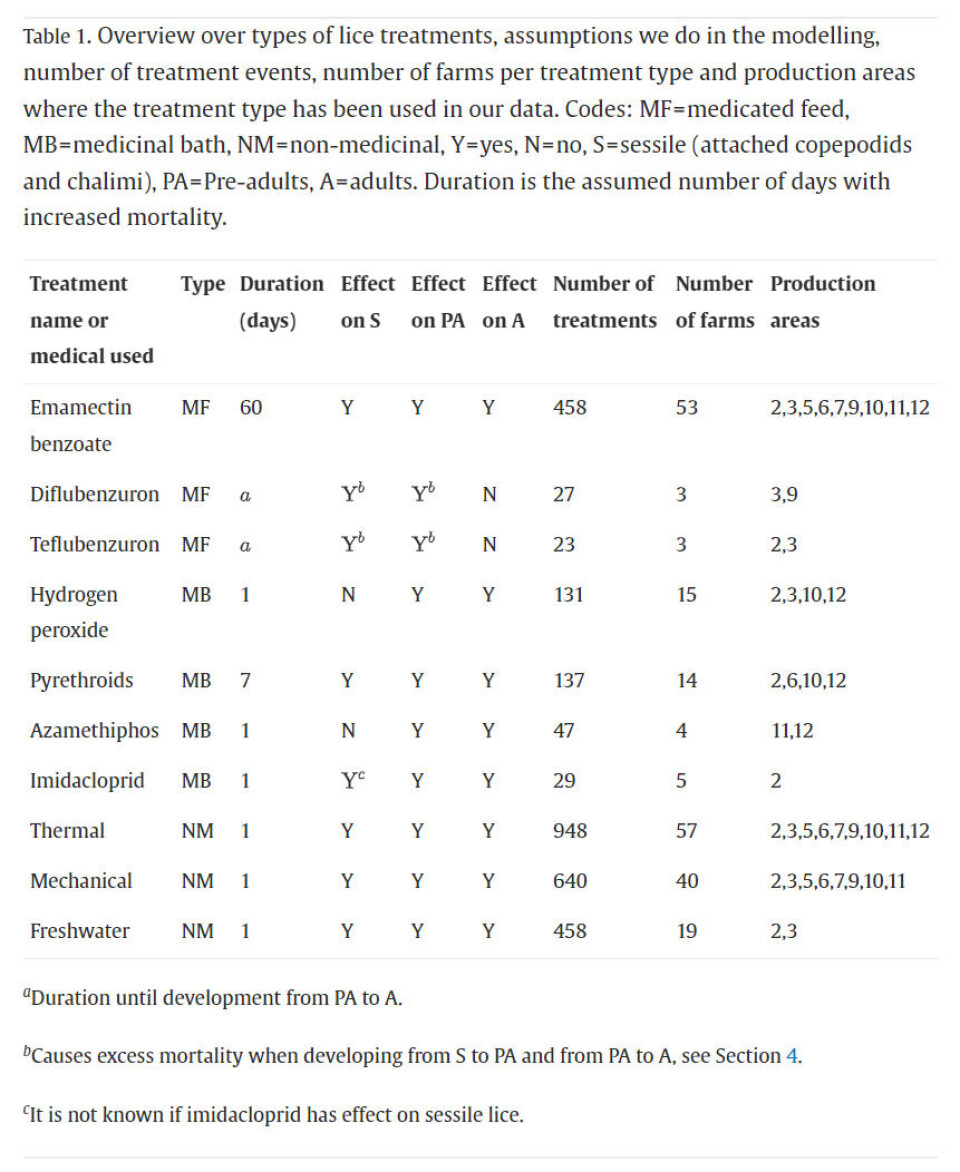
Study shows imidacloprid to be the stand-out lice killer
Benchmark product virtually 100% effective, while drug-free methods removed 70-80% of parasites
A new lice treatment currently licensed only in Norway and the Faroes has been calculated to be the most effective of 10 methods of removing the parasites from farmed salmon.
Researchers from the Norwegian National Statistics Centre and Norway’s Veterinary Institute used daily and individual cage data from a full production cycle at each of 90 farms from 2017 to 2020. The study is part of the Norwegian Seafood Research Fund (FHF) project LuseControl and is published in the journal Aquaculture.
The most commonly used methods were thermal, mechanical and freshwater treatments and these were 70-80% effective, but with high variability. This means that the number of lice was reduced on average by between 70% and 80% by such treatments.
For medicinal methods, the study calculated that the
effectiveness of in-feed treatments di- and teflubenzuron and bath treatment hydrogen
peroxide was still relatively good. Treatment with in-feed medicine emamectin
benzoate and bath treatments azamethiphos and pyrethroids was up to 50% effective.
Resistance to all these drugs is known, yet they are used to a certain extent.
Very good effect
Bath treatments with the new medicine containing imidacloprid were estimated to kill more than 99% of sessile and 98% of pre-adult and adult lice on average.
“Although this medicine has a very good effect, it is important to limit its use. Salmon lice can develop resistance to drugs and frequent use promotes this development,” said Veterinary Institute researcher Kari Olli Helgesen.
Aquaculture biotechnology company Benchmark’s Ectosan Vet is the only licensed product containing imidacloprid. Ectosan is designed for use with the company’s CleanTreat filtration system that removes chemical residues and lice egg strings from the treatment water before it is discharged into the sea.
The authors of the study, called “Estimated effectiveness of treatments against salmon lice in marine salmonid farming”, point out that every delousing treatment has welfare and financial costs, which need to be balanced against the assumed benefits of the treatments in terms of controlling lice abundance. Reliable effectiveness results are important for finding the optimal balance between these costs and benefits.
Medicinal treatments
“The aim of the present paper is to estimate the effectiveness of the types of treatments that are currently used in the Norwegian salmonid industry,” they write.
“The most effective treatments were medicinal treatments with the active substances imidacloprid and the benzoylureas diflubenzuron and teflubenzuron,” the authors say.
“Imidacloprid can however not be a sole treatment option since medicinal treatment methods historically have lost effectiveness over time due to resistance. Of note is also the limited number of treated cages and farms from which these figures are calculated (23–29 treated cages and 3–5 farms (for imidacloprid)).
Teflubenzuron
“The high effectiveness of imidacloprid is nonetheless expected, since the product was new to the market in 2021 and other medicinal treatments also showed high effectiveness in their first years on the market. We also found effect of imidacloprid on sessile lice, which we have not seen documented elsewhere.
“More surprising is the relatively high effectiveness of diflubenzuron and teflubenzuron, considering that these medicinal treatments have been used since 1996 in Norway. The use has however always been limited, probably since the substances lack effect on adult lice and because of the potential effects on wild crustaceans.”
























































